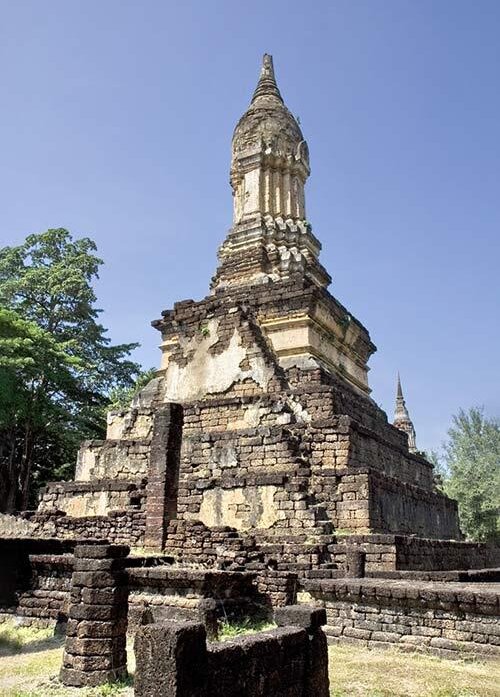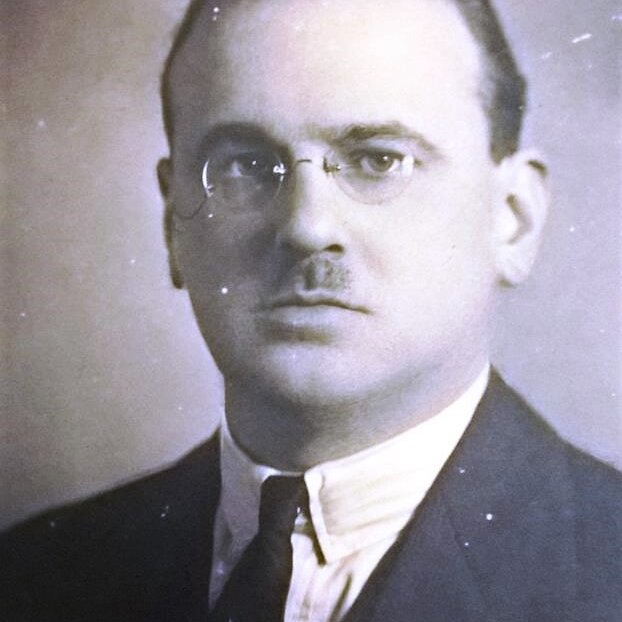The Origins of the Sukhodaya (Sukhot'ai) Art
by H.G. Quaritch Wales
A well-balanced study on cultural and artistic exchanges around ancient Southeast Asia, summarizing the author's original view on the Indianization process

Publication: The Journal of The Siam Society (JSS), Vol.44-2
Published: 1956
Author: H.G. Quaritch Wales
Pages: 18
Language : English
After working closely with George Coedes and Prince Damrong in Thailand, H.G. Quaritch Wales (1900-1981) developed his own views on Indianization and the cultural exchanges between early Southeast Asian polities. As the ancient flux of cultural and artistic influences and derivatives remains a contentious subject between modern states, in particular Cambodia and Thailand, we shall retain the following methodological points in this 1956 study:
- Indianization Process in Its Three Variants: 'In considering the Indianization of the earlier peoples of South-east Asia, I came to the conclusion that a people might undergo [a] extreme Indianization, in which case their art was never never more than a copy of the Indian, as for example at Dvaravati or the Pagan kingdom of Burma; or they might undergo [b] thorough but not extreme Indianization, in which case they retained certain preferenees or a way of doing things of their own. This led them to mould Indian culture in a certain distinctive wuy, which gained in force as the Indian influences declined. Examples are Champa, central Java and the kingdom of the Khmers. A third possibility was that [c] a people in a peripherical locality might remain marginal to Indian culture, and have only a limited cognizance of the Indian cultural pattern. An example would be pre-Mujapahit Bali, or West Java or, to go outside South-east Asia, China under early Buddhist influence. Such marginality may be a stage leading to fuller acculturation, or after aa time the Indian influence may recede without ever having been very dominating.'
- The Theory of Stimulus and Response: 'In my studies of the developmeut of the earlier Indianized cultures I have found it most valuable always to bear in mind the important principle of stimulus and response, which is a most active factor in culture change. For example, while Philippe Stern spoke of the Chams at the end of the IXth century looking round for new inspiration as a reaction against their own previous art, I preferred to think rather in terms of response to a stimulus, in this case the stimulus of Indo-Javanese art, which about that time was also influencing the Khmers (...) [Later], we see that both the Siamese and the Khmers in the XIIIth century were responding to the powerful new stimulus from Ceylon [and Hinayna Buddhism]. If resulting forms of religious architecture were thenceforward different from the classical productions of the Khmers, that is not because the Thai were avoiding Khmer styles, but because the Ceylon influences were different.'
- Assimilation and Adaptation as a Common Trait to Thai and Khmer cultures: 'The Thai of Sukhodaya were undoubtly most eager to learn, and were already showing that highly developed power of assimilation which Prince Damrong rightly pointed out to be one of the of the leading Siameese characteristics at all periods.'
- Beyond a Nationalistic Approach of the Past: 'The contingent of Thai we see on the Angkor Wat bas-reliefs had clearly imbibed some of Khmer military methods, and no doubt they made use of what they had learnt when they rebelled and took Sukhodaya, apparently by frontal assault. King Rama K'amheng did not disdain to make the script he had learnt from the Khmers the basis of the new alphabet he introduced. So too with architecture. Coedes says that the Thai did not want to build Khmer type temples, of which they had an example under their eye in Wat P'ra P'ay Luang, built at Sukhodaya by the Khmers in the XIIth or XIIIth century when the city was still under Khmer rule. Nevertheless, it is at Sukhodaya, though the date is uncertain, that the Thai built Wat Sisavai, in which the modifications that transformed the Khmer prasad [prasat] into the Ayuthyan prang have already started.'
Photo: Wat Chedi Chet Thaeo [Wat Chedi Chet Theu in the author's transliteration], built between 1340 and 1350 by Sukhothai King Lithai (source RenownTravel)
Tags: Thai, Siam, Thailand, Khmer Empire, Sukhotai, Khmer influences, Sri Lanka, architecture, sculpture, Indianization, comparative architecture
About the Author

H.G. Quaritch Wales
Horace Geoffrey "H.G." Quaritch Wales (17 Oct. 1900, Belsize Grove, England -1981) was a British historian and archaelogist who served as an adivser to Kings Rama VI and Rama VII of Siam from 1924 to 1928, devoting his his doctoral thesis to the Siamese State Ceremonies (published in 1931).
According to biographer David Russell Lawrence (1), Quaritch Wales left England for Argentina, and then Southeast Asia, due to the poor state of his marriage with Lena Jones, with whom he had a daughter he never recognized, and who had sought a divorce three years after their marriage. In Bangkok, he studied Thai art and history with French scholars George Coedes and René Nicolas.
From 1934 to 1942, Quaritch Wales undertook archaeological work on early Buddhist sites in Thailand and Malaysia as field-director of the Greater India Research Committee, publishing The Making of Greater India (1951), as well as to a number of scholarly articles and talks. In 1937, he claimed the discovery of the ancient city of Sri Deva (at Muang Si Thep in modern Thailand, Pa Sak River Valley), according to him ''the last hidden ancient city in Southeast Asia', dating back to the Funan era.
In 1942, Quaritch Wales and his second wife, Dorothy Wales, fled the Japanese occupation of the Malay Peninsula to the USA, where he became a contributor to The New York Times, moving back to England in 1948.
Later, he turned his attention to Southeast Asian cosmology with The Mountain of God (1953) and The Universe Around Them (1977). In 1981, he published Divination in Thailand, a study of Thai divination manuals.
A grandson of prominent antiquarian bookseller Bernard Quaritch, he took care of the bookselling company from 1950 to 1971, also regularly contributing to The Journal of The Siam Society.
(1) David Russell Lawrence, In Search of Greater India, HG Quaritch Wales: pioneer archaeologist, art historian and war correspondent (ANC Research Report, 2019)
